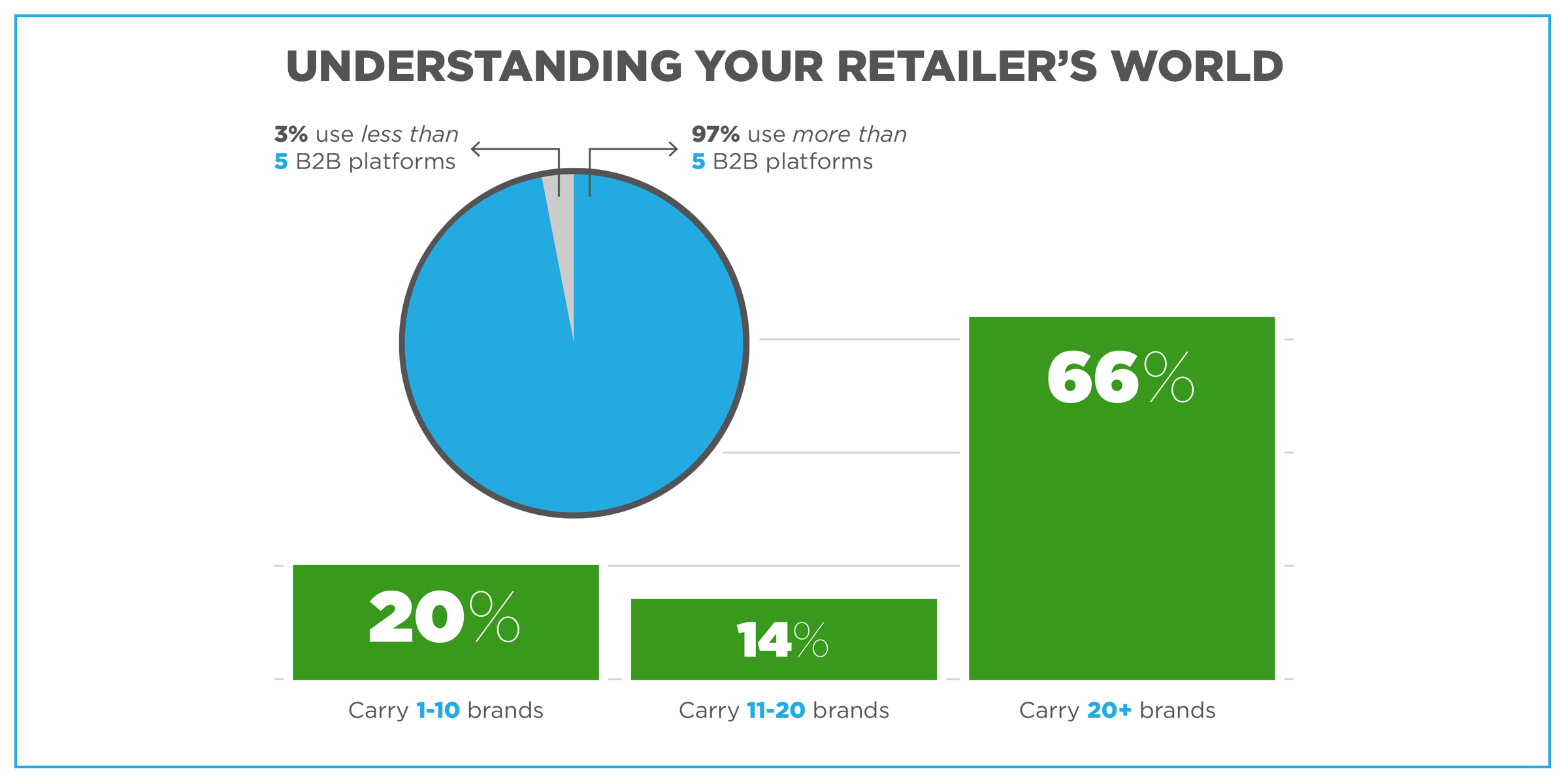What does the daily life of a specialty retailer look like? That’s easy. It’s busy. It looks busy.
Specialty retailers have an incredible amount of daily demands on their time. There are all the basics of running a store, the obvious need to create great experiences for customers, and the simple minutiae we often don’t think about, like keeping the store clean. Or finding time for lunch.
And then there’s all the effort that goes into working with brands. Learning about products, merchandising, ordering, managing inventory, working with reps - all of it takes time and effort.
Let’s take a look at what this means for the specialty retail on a daily basis.
Keeping It All Straight
Consider this: 20% of all specialty retail shops carry at least 10 brands. 14% of them carry as many as 11-20 brands. And - here’s the real kicker - 66% of all specialty retailers carry more than 20 brands.

Brands, think about that. Of all the shops you work with, almost 7 out of every 10 carry more than 20 brands.
That means the folks working in specialty retailer need to learn about entire product lines for every single one of those brands. Across 3 to 4 seasonal releases. Every year. That is a lot of information to absorb and passionately communicate to customers. And all that on top of everything else that demands a retailer’s time.
Why does this matter for you brands? Because it’s your job to make sure you are supporting specialty retailers in any way you can. You need to be providing opportunities for education, sending reps to the store, ensuring that ordering and merchandising is easy.
Their success is your success, and so you need to ask yourself: “Are you earning a spot on their shelves, and how does your wholesale experience compare to the 20+ other brands in the store?
Intentionally Help
More facts to consider: 97% of all the specialty retailers regularly use more than 5 B2B platforms in a single day.
Product education, pre-books, merchandising, at once orders, replenishments - there’s a lot a specialty retailer needs to do in order to successfully put a brand on their shelf. And every single one of those requires that they interact with the tools provided by the brand.
 With most stores carrying 20+ brands they are, at a minimum, dealing with 20 different systems. Sadly, it’s not uncommon for a single brand to be spread across multiple systems!
With most stores carrying 20+ brands they are, at a minimum, dealing with 20 different systems. Sadly, it’s not uncommon for a single brand to be spread across multiple systems!
Physical marketing materials and educational content, fractured ordering systems across email and spreadsheets, or siloed utility-style systems - it’s too much. And it doesn’t work.
It’s easy to get caught in the trap of layering system upon system as you grow and add doors. This is the danger of complacency, and not thinking about how it impacts the specialty retailer downstream of your decisions.
Don’t be one of those brands.
Invest In Your Retailers
There are two ways for a brand to alleviate this mess of too many systems and not enough time for specialty retailers. Fortunately, they go hand-in-hand.
One: Adopt a partner mentality. Success is mutual. If your retailers are succeeding, then you're succeeding. Get involved with their events. Educate them on your products. Enable your reps to support them in-store. Create co-op marketing opportunities.
Two: Do everything in your power to make sure that every interaction your retailers have with your brand is easy and worthwhile for your retailers.
You can accomplish this by providing a single, all-encompassing content & commerce destination. Specialty retailers need to be able to log in to your portal and go from educating themselves on your product, to merchandising the line, to ordering, all in one shoppable experience.
That’s a lot of buzzwords, but that doesn’t mean it’s not legit.
A hands-off approach to your relationship won’t cut it. Disparate systems, emails, spreadsheets, and printed materials aren’t good enough.
We’ve seen the numbers. Retailers are busy, and it’s up to your brand to earn a spot on their shelves by investing in their success.

